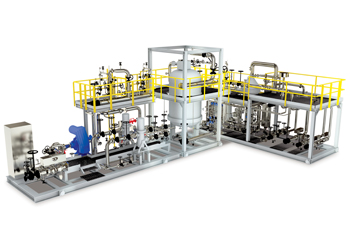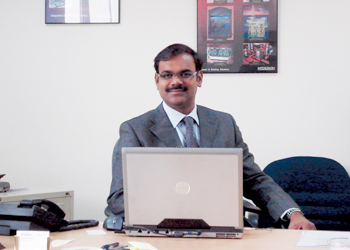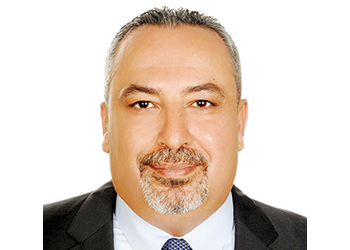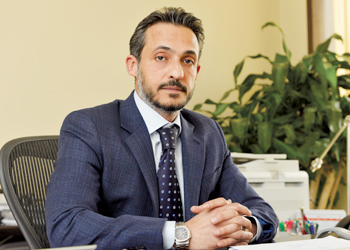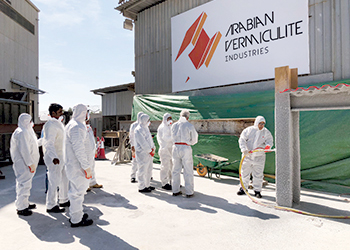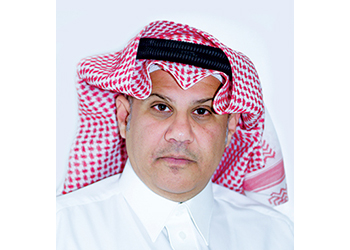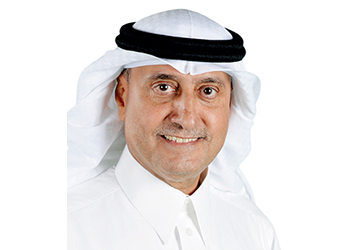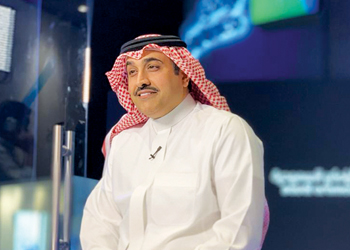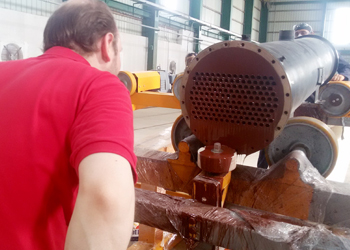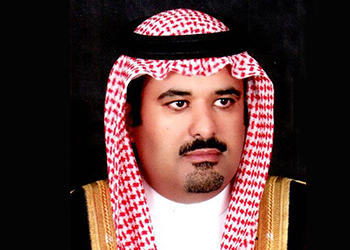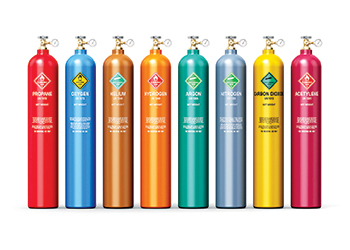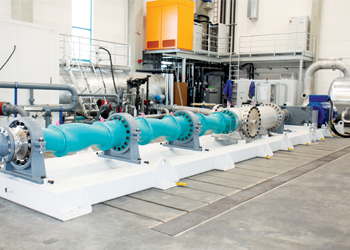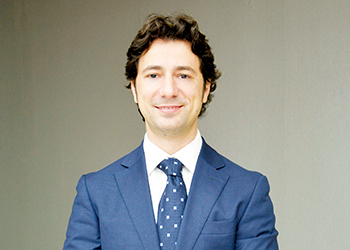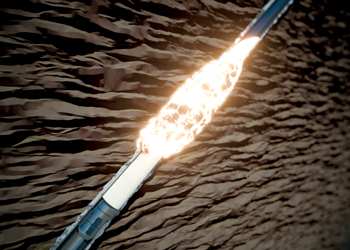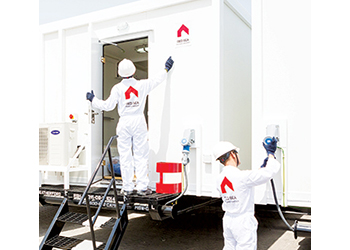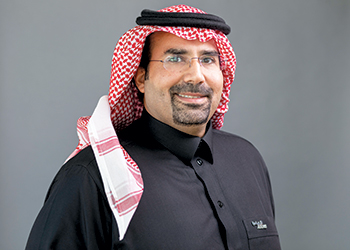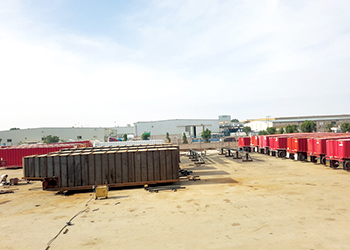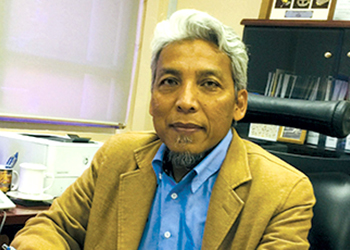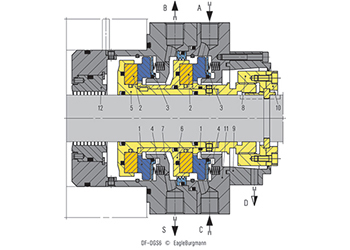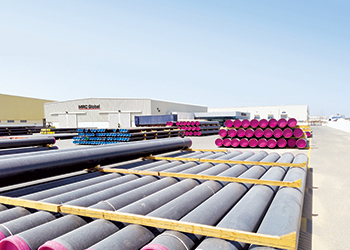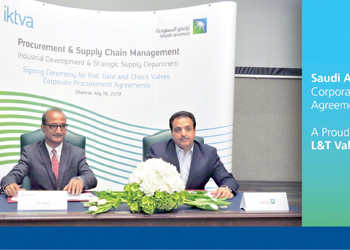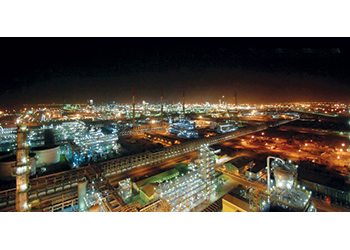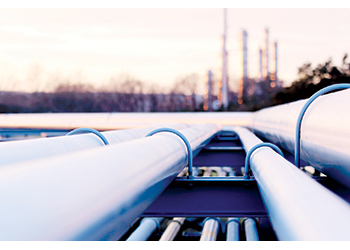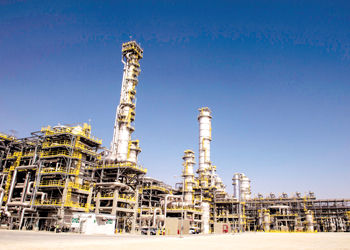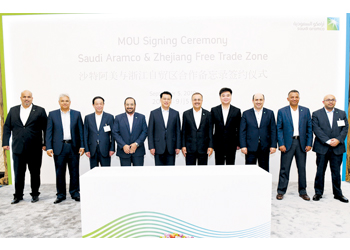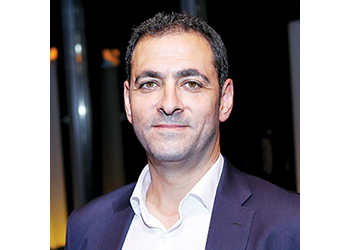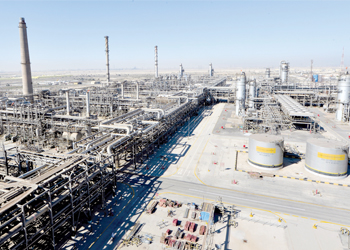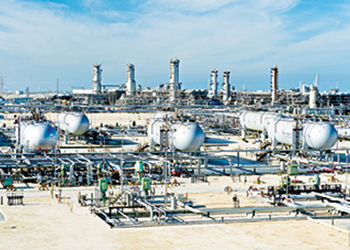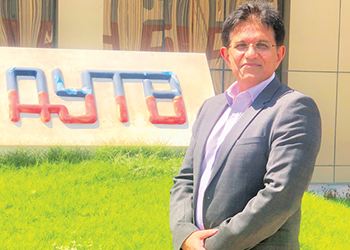
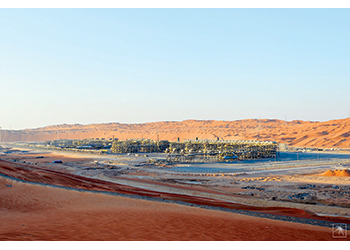 The Shaybah Gas Plant
The Shaybah Gas Plant
Saudi economic growth, and the building of new industries, the supply of energy, and the creation of job opportunities for hundreds and thousands of the local population have been made possible with the success of gas development
Perhaps oil is the first thing associated with Saudi Arabia by the outside world, but to us, gas is equally essential to our continued economic growth,” stated Ali I. Al-Naimi (then Minister of Petroleum and Mineral Resources, Saudi Arabia), while in Yanbu’, Saudi Arabia in October 1997.
These few words were uttered at the very onset of the Saudi Arabian gas development programme and not much of the gas resource was known and available at that time.
But after 21 years, one can see how close this statement has come to be reality. Indeed, Saudi economic growth, and the building of new industries, the continuous supply of energy, and the creation of job opportunities for hundreds and thousands of the local population have been made possible with the advent, progress, and success of gas development and production.
Going back in history, the discovery gas well in Dammam was spudded toward the end of 1956, and the first gas production from the Khuff-A reservoir started in early 1962.
That was the first stepping stone in the expedition of natural gas exploration in the kingdom, ushering in a new era of development, although the main thrust for gas expansion did not come about until the end of the 1990s.
Saudi Arabia’s gas resources are a major focus of the kingdom in meeting the future energy demand, which includes supplying household electricity, heating and cooling, water desalination plants, and downstream chemical and major industries.
Natural gas is available in huge quantities in Saudi Arabia and is found as nonassociated gas – different than associated gas, which is in the solution with the oil in the reservoir, and is separated at the surface.
Natural gas reserve exploitation is undergoing a major transformation, as the strongest source of all energy supplies in the kingdom, to ensure a plentiful sustained supply; which brings with it an increase in manpower, funding, new technology application, exploration, and development.
The use of natural gas for energy generation saves the more valuable remaining crude oil for export purposes, thereby generating revenue for the kingdom. The history of Saudi Arabia’s gas programme has been rich in achievements and growth over the last 40 years.
In 1975, the kingdom initiated the Master Gas System (MGS) that became operational by 1977 with the commissioning of the Berri, Shedgum, and ’Uthmaniyah gas plants to process only the associated gas that is recovered with oil production.
Associated petroleum gas, or associated gas, is a form of natural gas that is found with deposits of petroleum, either dissolved in the oil or as a free “gas cap” above the oil in the reservoir.
Nonassociated gas is a natural gas found in a natural gas reservoir that does not contain crude oil. Such a reservoir can contain some amount of liquid condensate that is produced during the production of natural gas. In 1984, nonassociated gas from the ’Uthmaniyah and Shedgum Khuff reservoirs was introduced into the MGS.
In 2001 and 2003, two new grass-root gas plants in the Hawiyah and Haradh areas, respectively, were put fully onstream to process only nonassociated gas.
This was followed by the Hawiyah gas plant expansion, along with the Hawiyah natural gas liquid recovery plant. Furthermore, the Khursaniyah gas plant (KGP) went onstream in 2010 to process only associated gas, and later in 2011, the KGP facilities were expanded to process nonassociated gas from the Karan reservoir’s Khuff gas — Saudi Aramco’s first offshore nonassociated gas development.
The future of the gas programme is bright, with the addition of several new gas plants along with new field developments and the construction of offshore platforms,facilities, and subsea pipelines to transport gas several hundred kilometers for gas processing.
The addition of new discoveries, drilling, and production will quickly raise the raw gas feed for the MGS to a stunning 20 billion scfd. The Saudi Arabian gas fields expand over the kingdom from far south in the Rub’ al-Khali (The Empty Quarter), west to the Red Sea, north to Midyan, and east where the majority of the gas can be found in and around the super-giant Ghawar field area, as well as offshore in the Arabian Gulf.
The gas can be found at all depths, from as shallow as thousands of feet to over 15,000 feet, and is stored in different types of reservoirs, including sandstone, dolomite, and carbonate facies.
Every reservoir is different and requires tremendous innovation and technology to unlock the reserve potential and to ensure the kingdom maximises the recovery of one of its most prized resources.
THE EARLY DAYS
Saudi Aramco has been exploring for oil and gas since the early 1930s, and until recently, it was always difficult to predict whether an exploration well was going to find oil, gas, or be a dry hole.
Saudi Arabia has been blessed with an abundance of both types of hydrocarbons, and starting in the 1970s, Saudi Arabia realised the importance of its natural gas resources.
For years, many countries flared their associated natural gas to access the oil reserves. Natural gas did not have much value and was not considered to have an international market. Over the years, it has become evident that natural gas is a clean, less costly, environmentally safe, and strong energy resource that must be preserved, exploited, and properly utilised for industrialised and developing nations.
Due to the abundance of natural gas, more and more uses – in addition to power generation and industrial usage – are being identified. That includes liquefied natural gas, which can be stored at very low temperatures as a liquid in tankers and shipped around the world from gas-rich countries to countries needing natural gas supplies.
In addition, natural gas is being utilised for use in transportation. Compressed natural gas or liquefied petroleum gas is being used to fuel many types of transportation, including cars, trucks, buses, tractors, and other motorised vehicles specially designed to run on natural gas.
Saudi Aramco’s natural gas team has grown tremendously since the 1990s, when only a handful of engineers and technicians reported as a unit to the bigger oil group division, and department levels that were responsible for developing and producing Saudi Arabia’s huge oil reserves.
As the work gradually grew with the drilling of wells and finding new gas reserves, the gas unit quickly transformed into a division, and subsequently, into a fullfledged department in 2012, known as the Gas Reservoir Management Department (GRMD).
Today, with a team of 120 engineers and technologists, GRMD manages close to a 1,000 nonassociated gas producing wells, 100 fields, 40 different reservoirs, 10 billion scfd of production, and hundreds of trillions of cubic feet of natural gas reserves.
Saudi Arabia’s gas reservoirs have a broad spectrum of characteristics. There are the easily producible excellent quality reservoirs with porous rocks for fluid flow, and the deeper and tighter porous challenging reservoirs that take huge capital investment, novel production mechanisms, and ingenuity to access the reserves.
There are also formation intervals that are fragile, and unconsolidated deposits containing massive amounts of gas requiring careful drilling. The highly consolidated and very tight deposits, on the other hand, must undergo massive hydraulic fracturing to unlock the gas.
The variation in reservoir bottom-hole temperatures, from 250 °F to over 300 °F, formation pressures from a few thousand to over 10,000 pounds per square inch, and condensate content from very rich with hundreds of barrels of condensate per million scf to dry gas with no associated condensate, all pose many challenges and require unique approaches in each area, reservoir, or sector for efficient exploitation.
Regardless of reservoir characteristics, the GRMD strategy is to focus on efficiency, maximise recovery, and maintain high safety standards requiring the continuous development of novel ideas and concepts, improvement of existing technologies, and appropriate use and implementation of new techniques, processes, and strategies.
GRMD works hand-inhand with other departments associated with geoscience, drilling, production, operations, and research, to reach the overall success in the exploitation of natural gas.
GRMD has established itself in the global petroleum engineering sector as a world-class operator and manager using innovative ideas and novel technologies for improved hydrocarbon recovery.
At the same time, the department has heavily focused on coordinating with international organisations and societies to share its experience through active participation in forums, workshops, conferences, and technical events.
GRMD management has championed the approach of tapping new conventional gas resources in and around existing fields with delineation (exploratory) wells, resulting in the discovery of new reservoirs and adding to reserves by extending previous field limits.






















































































